Paris, je t’aime: why we’re falling for plaster once more

Roula Khalaf, Editor of the FT, selects her favourite stories in this weekly newsletter.
Ask Stephen Antonson what he does for a living and he will struggle to give you an answer. A quick one, at least. He started out in fine art – dabbling in metal, glass, oil painting, photography and video – before finding his current métier. “Now I occupy this funny space between art and design,” he says from his New York studio. “Sometimes I just tell people ‘I design furniture and lighting’ and hope they don’t ask any questions. Because when I say that I make plaster tables and chandeliers, there’s nearly always a pause.”
Those who know and appreciate Antonson’s work have no trouble filling in the gaps. “He’s a master of plaster, with such free and purely artistic vision for the material,” says Isabelle Dubern-Mallevays, co-founder of bespoke design platform The Invisible Collection. “He’s a Giacometti in Brooklyn!”

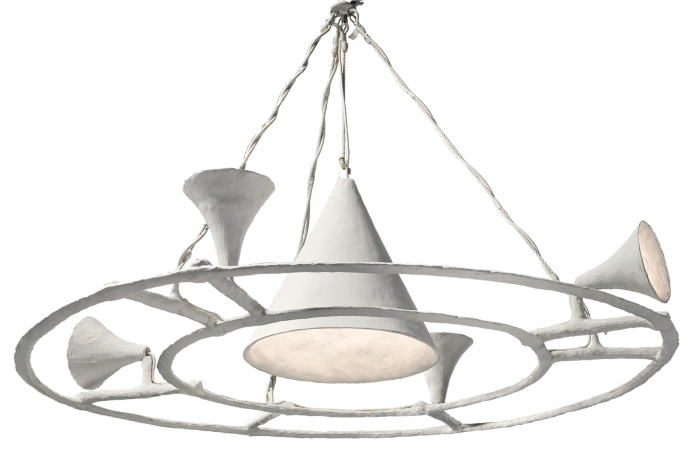
Last month, Antonson joined The Invisible Collection’s roster of designers, alongside names such as India Mahdavi, Pierre Yovanovitch and Ron Arad. His structural chandeliers, geodesic tables and mirrors are all handmade in his studio, where he paints layers of plaster of Paris onto cast forms, wood or steel structures.
Antonson discovered his passion for plaster in the studio of artisan Tom Donahue. “At the time, he was the plaster guy in New York. He had this amazing space in Manhattan. I spent a few days there and I fell in love,” he recalls. “I’d found a material that was simpatico to my temperament. The thing about plaster is that once you mix it up with water you have five minutes to make your decisions. It’s saying, ‘Alright, now’s your chance.’”
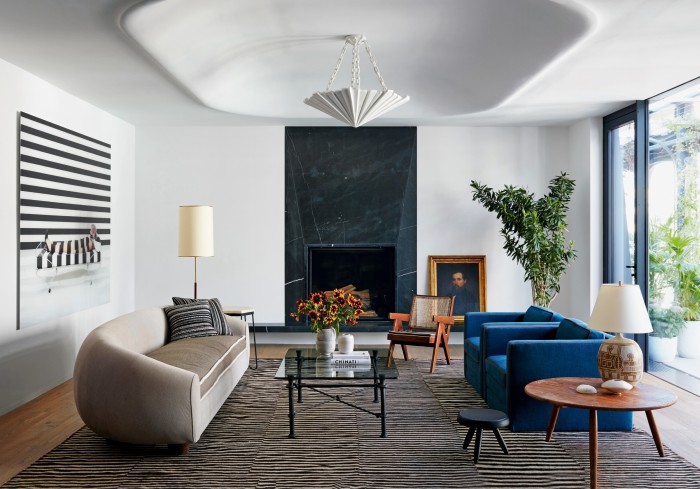
Plaster, of course, has been used since antiquity both decoratively and as a functional wallcovering. Early mixtures were lime based, but from the mid-13th century fine gypsum powders became the material of choice for wall rendering, as well as architectural mouldings, and later for the sculptural models destined to be bronzes by Auguste Rodin or Henry Moore. But when Antonson talks about the “historical precedent” to his practice, he’s referring to the artists who used this “poorest of materials” as a primary medium.
Alberto Giacometti cast figurative sculptures in plaster but also created domestic pieces, including his conical and circular chandelier (c1954), sold for £2,045,000 by auctioneers Phillips in 2017. Giacometti’s brother Diego’s plasterwork hangs as delicate floral stemmed chandeliers in the Picasso Museum and was collected by Hubert de Givenchy. When Christie’s auctioned the French fashion designer’s considerable collection in 2017, a plaster lantern by Diego Giacometti fetched €2,258,500. Around the same time, Parisian Serge Roche was shaping plaster into rococo flourishes (shell-shaped sconces, fronded candelabra and decadent console tables).

This melting pot of influences is now being reset by contemporary designers – plaster’s organic, textured appearance chiming with the prevailing mood for natural, tactile interior finishes. Designers might call upon Antonson, for instance, for wall reliefs for a superyacht or a “huge ceiling installation in Central Park West”.
Interior designer and antiques dealer Rose Uniacke turned to the fantastical and flamboyant plaster creations of designer-maker Oriel Harwood when creating a showcase at last year’s London Design Festival, and also produces her own collection of minimal cone-shaped pendant lamps and shell sconces, while Nicky Haslam dots plaster pieces around his eclectic schemes – and a huge, leggy chandelier graces the living room in his own London home.
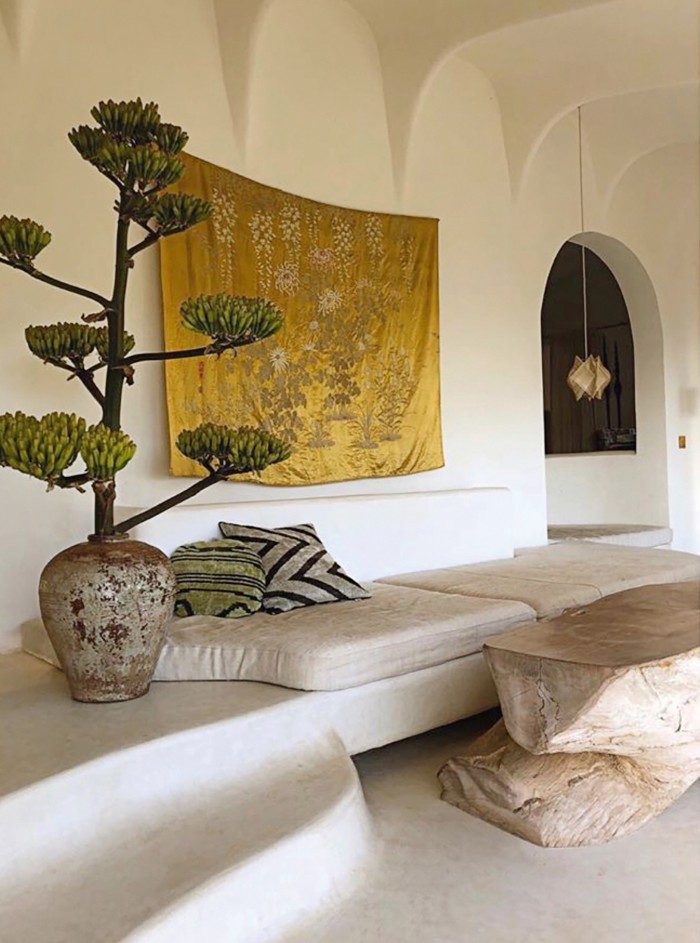
For London-based interior designers Rita Konig, Hollie Bowden and Beata Heuman, the designer-maker currently attracting their attention is Viola Lanari, a former interior stylist who, four years ago, decided to use plaster-coated bandages to make the lamps in her own home “less ugly”. In fact, Italian-born Lanari never uses casts. “I’m just not very interested in the method,” she says. “I prefer free-formed layers and layers, with hemp, old bits of fabric and wire creating the structure. They are finished in a finer plaster and then waxed. It’s still all very experimental.” She is currently working with “nuggets” of broken plaster. “They are going everywhere,” she says. “I’m moving away from the botanical. Abstract is more interesting to me.”
Abstract forms are also the basis of Chilean designer Abel Cárcamo’s functional plaster sculptures. His sinuous chairs, tables and stools feel strangely anthropomorphic, and much as in Antonson and Lanari’s creations, the hand-worked surface is combined with a near-luminous finish. “It’s all about light,” says Lanari. “The way hand-finished plaster reflects light is very unique.”
The latter is one reason why raw plaster is once again in favour as a wall finish, and is being revisited with artisanal skill. Eddy Dankers, the master painter and plasterer employed by the Belgian royal family as well as the designer Axel Vervoordt, has created the Domingue Architectural Finishes line for the home with Chateau Domingue. “Working with lime plasters never totally went away, but we brought it back,” says Dankers, whose aesthetic is typically understated and based on natural, eco-friendly materials. “Various plasters can achieve different effects that can be very rustic, very contemporary, or more Palladian and sophisticated. It can be used for floors too. It’s a very old technique that we’ve revisited.”

Dankers’ own home on the outskirts of Antwerp shows just how different plaster can be. The atmospheric living room is lime plastered then finished in a dark, earthy-brown mineral-based paint, incorporating soil from his father’s garden. Pastellone – Domingue Architectural Finishes’ version of tadelakt, a waterproof plaster used in Moroccan architecture – sets the mood in the guest bathroom, while the light-filled orangerie is finished in his signature Dankers White. “My father told me how to make it. It’s the perfect white because it works everywhere in the world, no matter what the light is like.”
The white-on-white look synonymous with Mediterranean interiors is being brought up to date by Oro del Negro and Manuel Villanueva of Mallorcan architectural studio MoreDesign. The duo fuses traditional techniques with sustainability. “All the plaster we use is farmed in a radius of 100km and is prepared without added chemicals,” says del Negro. “Artisans literally boil rocks in stone kilns to produce small batches. It has a unique tactile quality with beauty and longevity – it could potentially survive for centuries.”
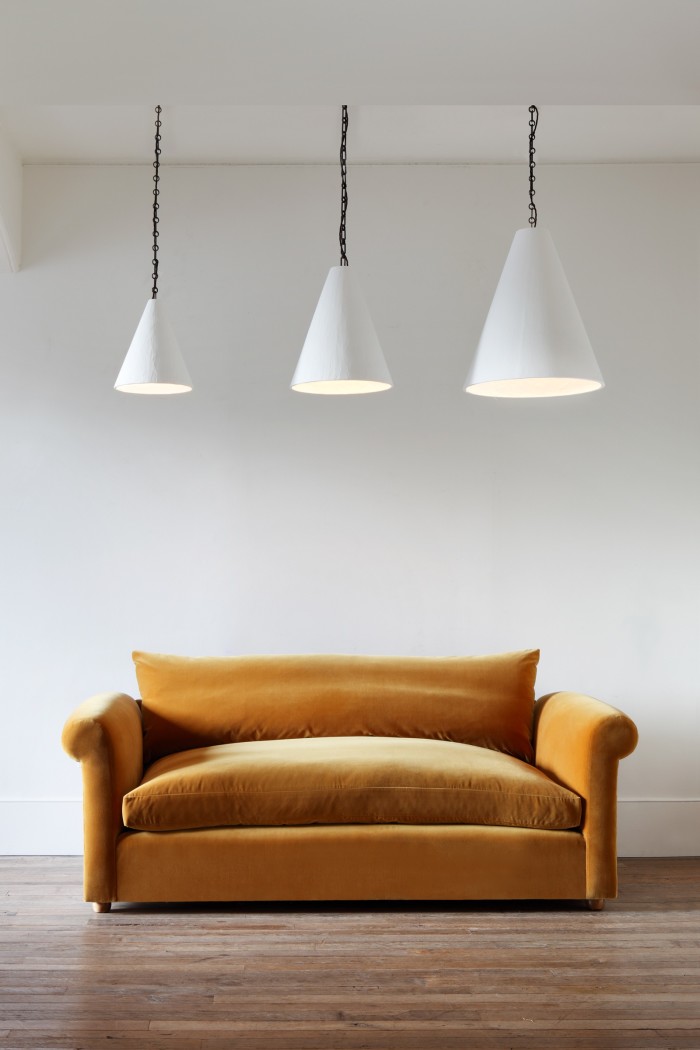
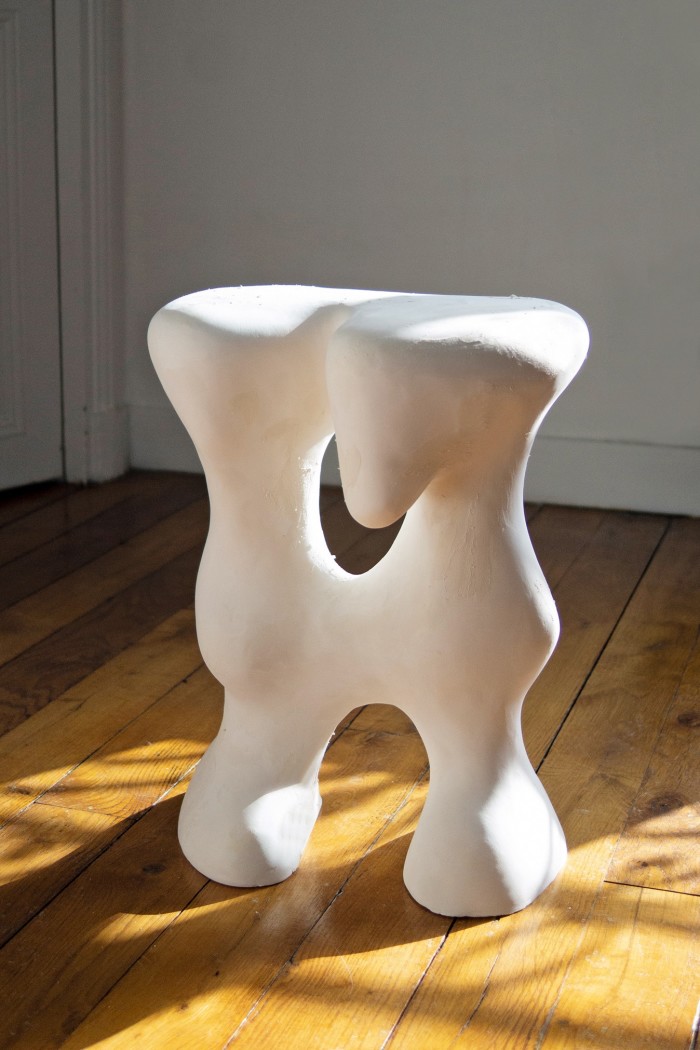
MoreDesign, which has its own master plasterer Miguel Angel, is currently overseeing the finishing stages of an eco-friendly off-grid home. Owned by a musician, it is being constructed entirely from sustainable materials. The plaster is much more than mere wallcovering and creates nooks and alcoves for showers, sinks and fireplaces. “It allows us to in-build all our furniture and integrate objects into one coherent volume,” del Negro says.
The sculptural potential of in-built nooks is being explored beyond the Balearics. They were used to striking effect in both the 2018 Grotto project by Paris-based Studio Haddou-Dufourcq, and fashion designer Simon Porte Jacquemus’ interior design for Paris restaurant Oursin – where each alcove displayed a ceramic vessel.
Meanwhile, classical pieces are enjoying a renaissance and 19th-century casts are sought after at auction. City headhunter Frank Hollmeyer is one collector; his architectural and sculptural pieces hang on the walls of his south London townhouse beside 17th-century Dutch paintings. “I bought my first plaster cast in Antwerp in 1997,” he says. “Now I have about 35, including five by Domenico Brucciani – who made casts of a phenomenal quality at his London workshop – and two very special 18th-century capitals from a ballroom designed by Robert Adam.” The rather formal effect they create en masse is the polar opposite of the free-flowing organic architecture of Jacquemus’ restaurant interior or a Vervoordt hotel. Perhaps the true alchemy of plaster is that it can be anything you want it to be.
Comments